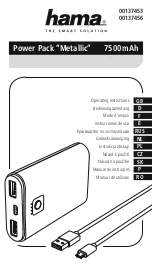
5
PERSONAL SAFETY
1. No children or pregnant women should enter the work area where the paint
sanding is being done until all clean up is completed.
2. A dust mask or respirator should be worn by all persons entering the work area.
The filter should be replaced daily or whenever the wearer has difficulty breathing.
See your local hardware store for the proper N.I.O.S.H. approved dust mask.
3. NO EATING, DRINKING or SMOKING should be done in the work area to prevent
ingesting contaminated paint particles. Workers should wash and clean up
BEFORE eating, drinking or smoking. Articles of food, drink, or smoking should not
be left in the work area where dust would settle on them.
ENVIRONMENTAL SAFETY
1. Paint should be removed in such a manner as to minimize the amount of dust
generated.
2. Areas where paint removal is occurring should be sealed with plastic sheeting of 4
mils thickness.
3. Sanding should be done in a manner to reduce tracking of paint dust outside the
work area.
CLEANING AND DISPOSAL
1. All surfaces in the work area should be vacuumed and thoroughly cleaned daily for
the duration of the sanding project. Vacuum filter bags should be changed frequently.
2. Plastic drop cloths should be gathered up and disposed of along with any dust
chips or other removal debris. They should be placed in sealed refuse receptacles
and disposed of through regular trash pick-up procedures. During clean up,
children and pregnant women should be kept away from the immediate work area.
3. All toys, washable furniture and utensils used by children should be washed
thoroughly before being used again.
Symbols
•
The label on your tool may include the following symbols. The symbols and their
definitions are as follows:
V ..................volts
A ..................amperes
Hz................hertz
W..................watts
min ..............minutes
................alternating current
............direct current
no ................no load speed
................Class I Construction
..................earthing terminal
(grounded)
................safety alert symbol
................Class II Construction
opm ..............oscillations per minute
(double insulated)
•
When using an extension cord, be sure to use one heavy enough to carry the current
your product will draw. An undersized cord will cause a drop in line voltage resulting
in loss of power and overheating. The table shows the correct size to use depending
on cord length and nameplate ampere rating. If in doubt, use the next heavier gauge.
The smaller the gauge number, the heavier the cord.
Minimum Gauge for Cord Sets
Volts
Total Length of Cord in Feet
120V
0-25
26-50
51-100
101-150
(0-7,6m)
(7,6-15,2m) (15,2-30,4m) (30,4-45,7m)
240V
0-50
51-100
101-200
201-300
(0-15,2m) (15,2-30,4m) (30,4-60,9m) (60,9-91,4m)
Ampere Rating
More
Not more
American Wire Gauge
Than
Than
0
-
6
18
16
16
14
6
-
10
18
16
14
12
10
-
12
16
16
14
12
12
-
16
14
12
Not Recommended
90571150 PC250MT REVISED OScillating Tool*.qxd:??????-00 Cir Saw book 1/14/11 11:31 AM Page 5






































